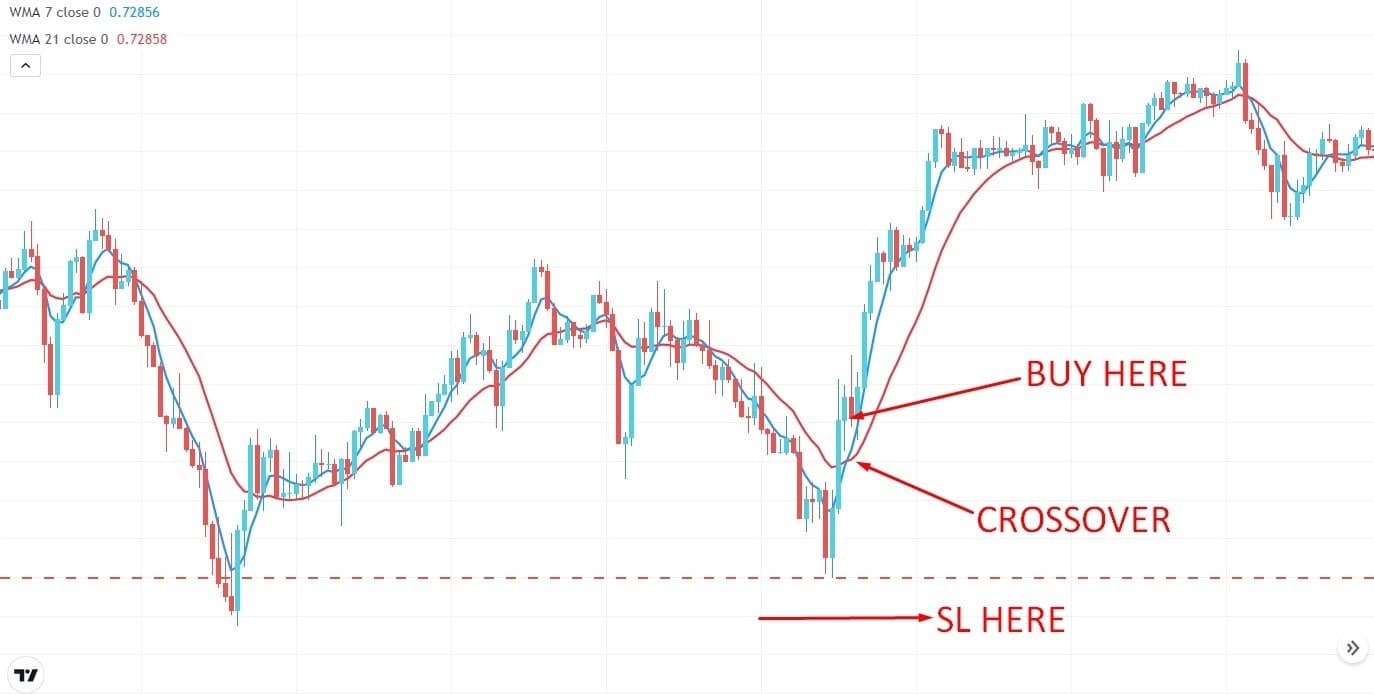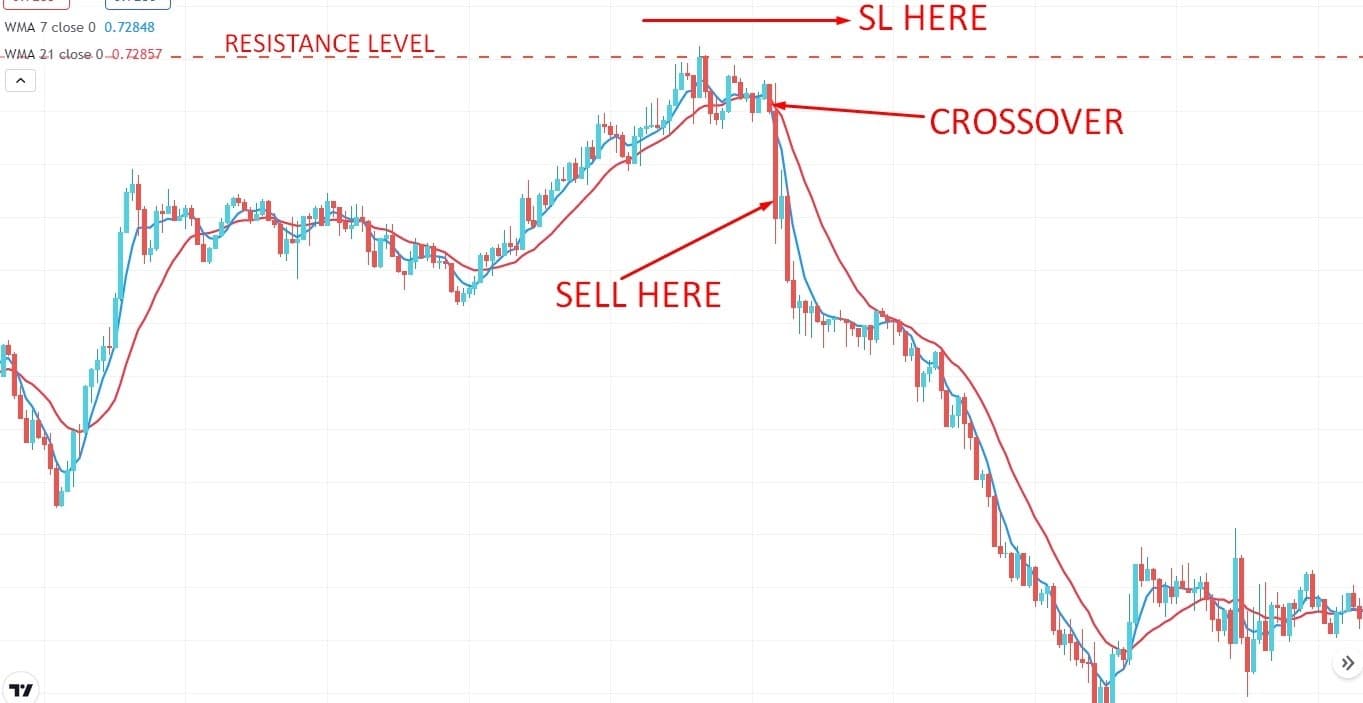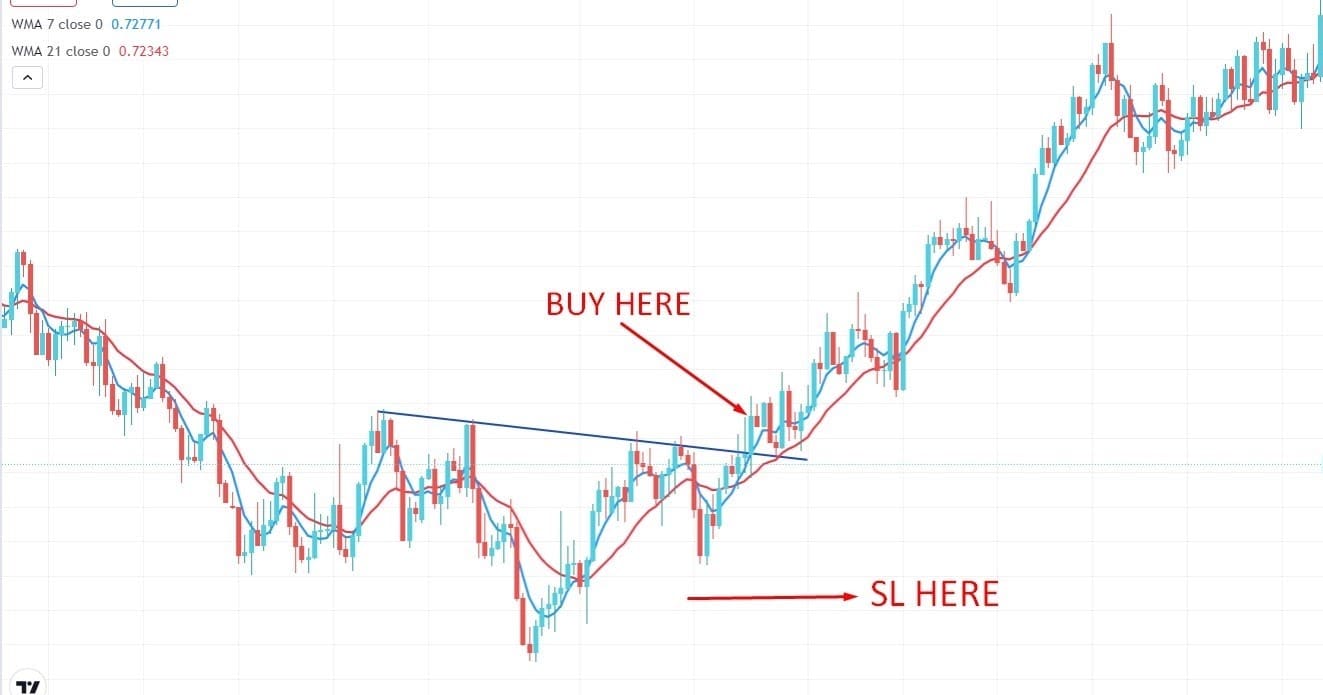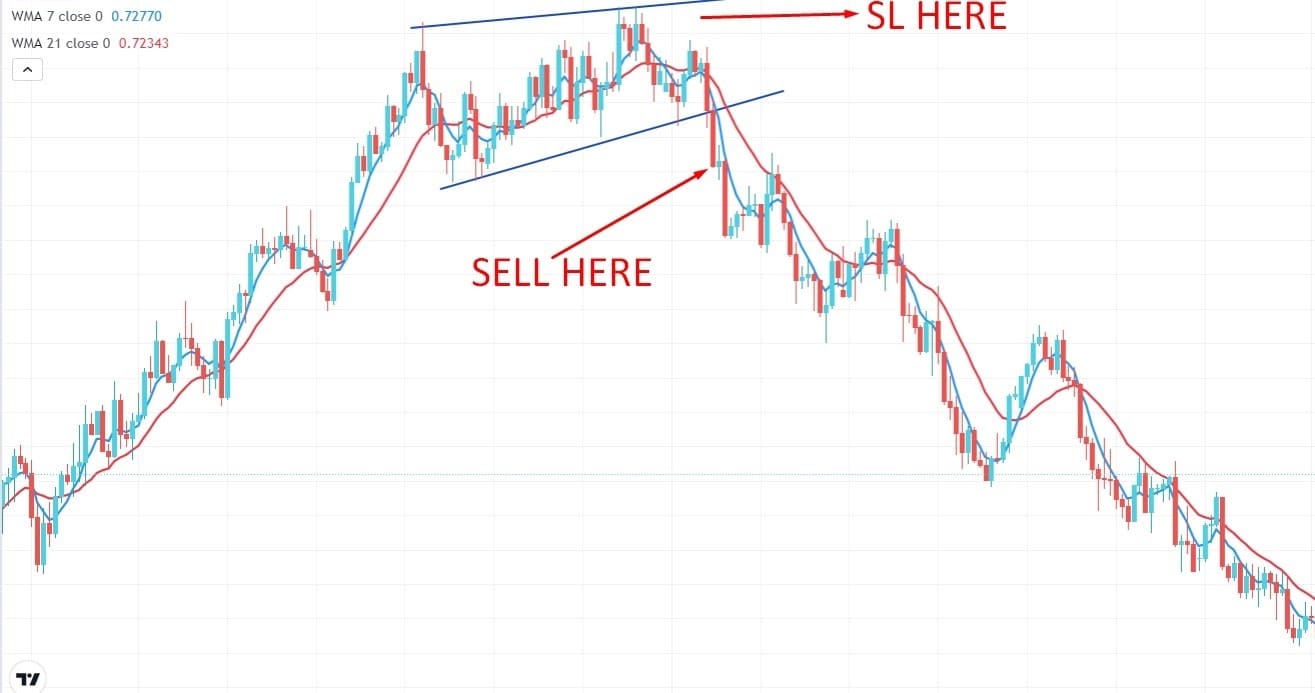Nowadays, many types of indicators are available to traders, yet weighted moving averages (WMA) are efficient and most popular. Thanks to its simple formula and expertise, it helps traders comprehend and evaluate the market momentum.
Compared to the SMA, the calculation of the WMA is exclusive because it follows the price more closely. However, a WMA puts more weight on current data instead of the previous data. It is completed by multiplying each bar’s price by a weighting factor.
What is the weighted moving average?
It is beneficial in decision-making indicators for buying and selling as well. In terms of accuracy, the calculation of the trend direction that WMA provides is more accurate than a simple moving average. WMA puts the same weight on all numbers in a data set.
Moreover, the WMA gives recent data points barely putting weight on the past data. The WMA came by assembling each observation of the data set alongside a weighting factor. At the moment of generating trade signals, traders utilize the WMA.
For example, if the price action goes towards the WMA or over it at that moment, it is the signal indicating closing the trade. Besides, on any account, the price action plunges closer to the WMA or lowers its hint of the valuable time to enter the trade.
How to identify trade using WMA on the chart?
Identifying the WMA requires taking current data points and putting a weighting to a greater extent than the previous data points. And, the total weight value must be equivalent to 1 or 100% after being totaled.
In the calculation of WMA, please consider the significance of every data point depicted in the weight given to it. As mentioned earlier, the WMA calculation is dissimilar to the SMA, and wherein all data points provide an equivalent weighting. On the contrary, for SMA, add up all the data points inside a specified period and divide the value by the same period number.
Hence, the WMA is more thorough and explanatory than the simple moving average. On top of that, the WMA is more approachable to price action.
Short-term trading strategy
The WMA is the most profitable and best way to trade trend reversal, which provides high accuracy trades and contains a good amount of gain in the short term. Most scalpers use this trading method daily, and they have a good amount of pips. You can also gain a good amount of pips if you use this trading method properly. Moreover, in this trading strategy, we will use M5, M15, H1 time frames to trade.
This trading method will look at the crossover between the two WMAs, period-7 and period-21. The bearish reversal will happen when the 7-period WMA crosses the 21-period WMA at the top of the chart.
On the contrary, the bullish reversal will happen when the 7-period WMA crosses the 21 period WMA on the bottom of the chart. Below, we have provided a bullish and bearish trade setup using the 7-period and 21-period WMA.
Bullish trade setup

Entry
Place a buy order when the 7-period WMA crosses the 21-period WMA from downside to upside, and the price has an impulsive bullish candle close above the WMAs.
Stop loss
Put the SL order below the support level with at least a 5-10 pips buffer.
Take profit
Take the profit when the trade achieves at least a 1:3 risk/reward ratio. Or you can ride the trade by targeting the next resistance level.
Bearish trade setup

Entry
Place a sell order when the 7-period WMA crosses the 21-period WMA from upside to downside, and the price has an impulsive bearish candle close below the WMAs.
Stop loss
Put the SL order above the resistance level with at least a 5-10 pips buffer.
Take profit
Take the profit when the trade achieves at least a 1:3 risk/reward ratio. Or you can ride the trade by targeting the next support level.
Long-term trading strategy
It is very profitable and highly accurate. It can provide a good amount of pips in the long run. In this trading strategy, we will be going to use the same crossover strategy we have used in the short term, but it will be applied on the higher time frames like H4, D1, W1.
Bullish trade setup

Entry
Enter a buy trade when the price broke above the bearish trend line, and the 7-period WMA crossed over the 21-period WMA from downside to upside.
Stop loss
Place the SL order below the last swing level with at least a 10-5 pips buffer.
Take profit
Take the profit by calculating at least a 1:3 risk/reward ratio.
Bearish trade setup

Entry
Enter a sell trade when the price breaks below the bullish trend line and the 7-period WMA crosses the 21-period WMA from upside to downside.
Stop loss
Place the SL order above the last swing level with at least a 10-15 pips buffer.
Take profit
Take the profit by calculating at least a 1:3 risk/reward ratio.
Pros & cons
| Pros | Cons |
| Using the WMA, traders can rapidly choose trends. | For longer time periods, the WMA is inconvenient. |
| For a quick grasping of the changes, shorter periods are best suited. | The WMA gives more false signals than the SMA. |
| The WMA does not make traders clueless about the minor corrections in the trend shifts. | In terms of defining the changes in a long-term trend, the weighted moving average is non-preferential. |
Final thoughts
In a nutshell, the WMA is a popular technical indicator for trading in the financial market. Therefore, having knowledge of the application and conjoining the WMA with other indicators to obtain an excellent possible outcome over the trades.




